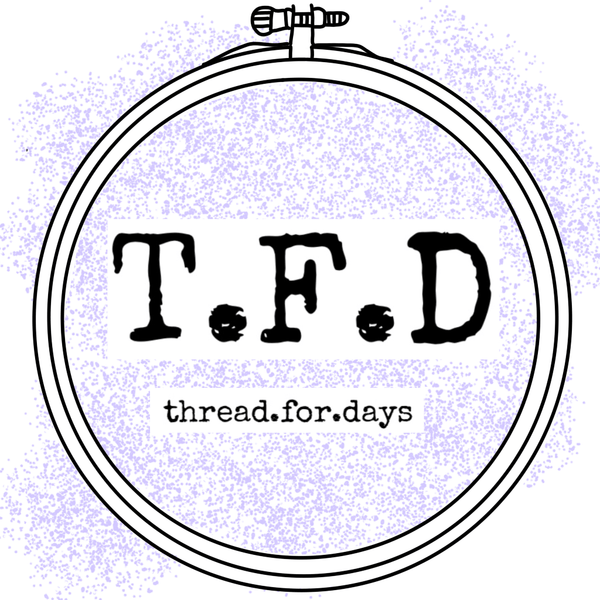Believe it or not, before I started to make embroidery art, I made iron on embroidered patches!
My introduction to embroidery was just before the pandemic. My goal and motivation to learn was to make embroidered patches to fill my partner's denim jacket.

In that time, I learned the basics of embroidery as well as a pretty easy way to turn basically any embroidery project into an iron on patch.
In this blog post I will show you how to turn your own embroidery into an iron on patch!
What you will Need:
All of the supplies are things that can easily be found in your home if you already embroider. There is really only one item that can't be replaced with something else.
- iron (when I started I used a hair straightener- really anything that gets decently hot will work)
- scissors (fabric scissors preferred but literally anything will do)
- a pen/pencil/marker - something to trace out your patch
- your embroidered piece!
- HeatnBond Ultrahold (this is the thing that can't be replaced)
That's all! Now let's get into it.
Step 1: Cut out your embroidery piece.
I did make a tiktok video about this entire process if you are more of a visual learner, but the first step is to cut out your project with a large allowance. For this I usually do about a 1/2 inch but if you want to go bigger, that totally works too.
A large allowance is important here because I find that often pieces once cut, tend to fray a little bit. If you cut it too short, this could impact the embroidered part and we do not want that. This allowance will eventually be fused to the HeatnBond in the next couple steps and then trimmed down (or removed completely if you like).
Your patch allowance should look something like this:

Step 2: Measure your HeatnBond
You will notice that the HeatnBond has two sides-paper and plasticy. For this step you are going to want to line up the "wrong sides" of the HeatnBond (wrong side = plasticy) and the wrong side of the embroidered piece (wrong side=embroidered butt).

Once they are lined up you are going to use your pencil/pen/marker to trace as closely as you can around the embroidered piece.
After it's been traced- time to cut it out!

(please disregard the allowance on this above image-this is an early unfinished patch and I cut it WAY too short)
Step 3: Iron
With the wrong sides together and the embroidery art facing up you will want to iron the edges first. It's important to iron the edges first as it is the easiest way to seal them before ironing the back and if anything goes wrong at this point in the ironing process (the HeatnBond shifts) you can still easily fix it/start over.

Once the edges are set and ironed, flip the patch over and iron the back.

voila! Patch is now iron on, time for the final step!
Step 4: Trim
The patch is technically ready to be ironed on as it is, but I like to trim down the allowance. I tend to trim it down to about an 1/8inch (just so there is enough for stitching) but you can trim it to your own preference.

From here, peel off the back, iron the patch on to your jacket/jeans/fabric/bag whatever, and then if you want to (I do) add a few stitches to secure it.

That is that; how to turn any embroidery project into an iron on patch. If you have questions about the process, drop a comment!
Stray weird and wonderful pals,
~Kass

